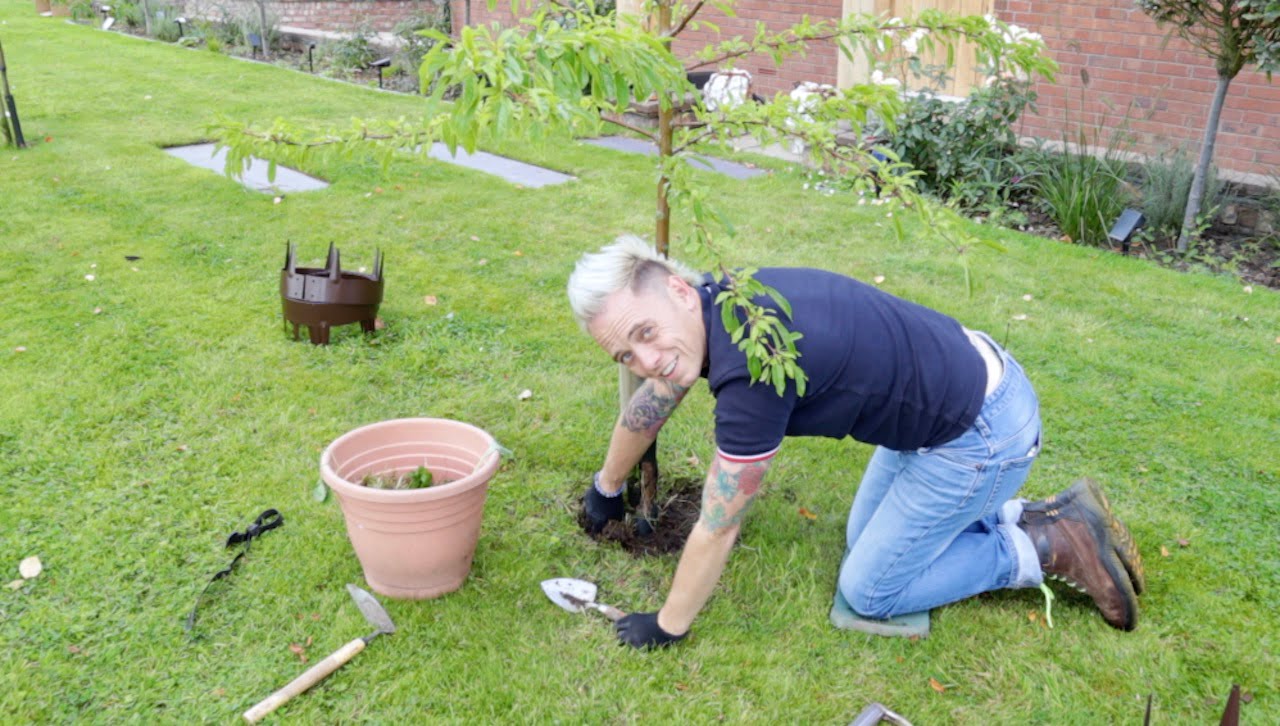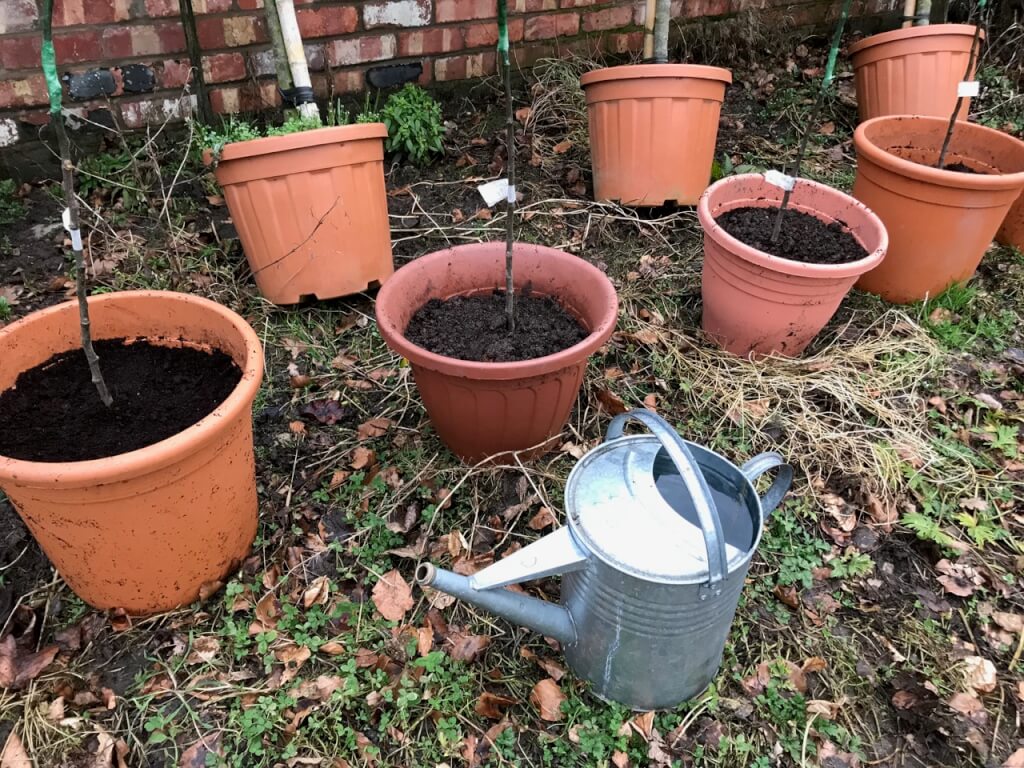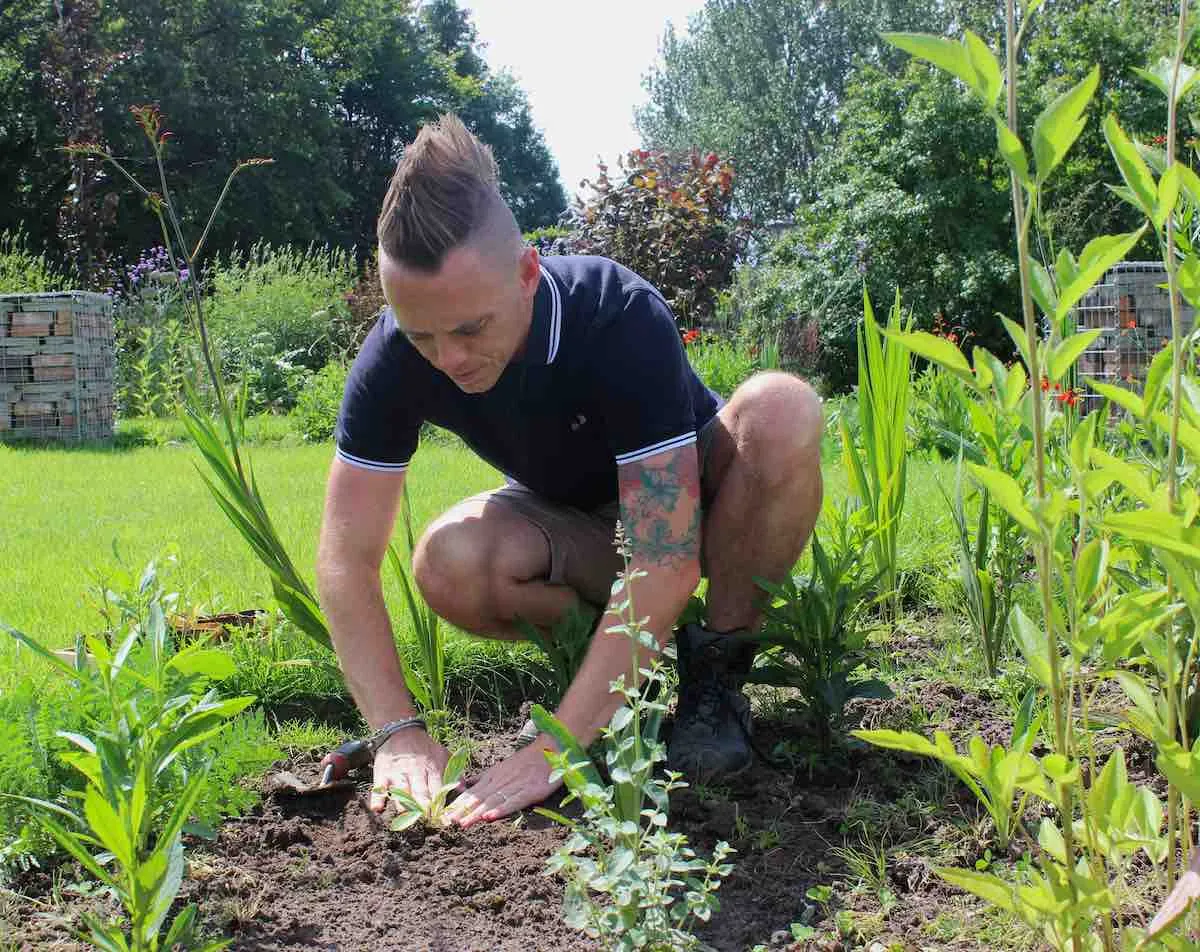Ask a Gardening Question Forum
 Lee Burkhill: Award Winning Designer & BBC 1's Garden Rescue Presenters Official Blog
Lee Burkhill: Award Winning Designer & BBC 1's Garden Rescue Presenters Official Blog

Welcome to the ultimate beginner gardening and garden design forum! Where no gardening question is too silly or obvious. This online gardening forum is run by Lee Burkhill, the Garden Ninja from BBC 1's Garden Rescue and a trusted group of experienced gardeners.
Whether you are a beginner or an expert gardener, it's a safe place to ask garden-related questions for garden design or planting. If you have a problem in your garden or need help, this is the Garden Forum for you!

Posting Rules: This space is open for all garden-related questions. Please be polite, courteous and respectful. If you wouldn't say it to your mum's face, then don't post it here. Please don't promote, sell, link spam or advertise here. Please don't ask for 'cheeky' full Garden redesigns here. They will be deleted.
If you need a garden design service, please use this page to book a design consultation. I will block anyone who breaks these rules or is discourteous to the Garden Ninja Community.
Join the forum below with your gardening questions!
Quote from AndyG on 15th February 2024, 11:34 pmHello, My name is Andy Graves. I live in New Zealand and I have a 2 acre garden that I started from scratch in a paddock (field) 9 years ago. I have very little experience and have just planted what I thought looked nice or was recommended on one of the many gardening shows on TV.
I have an issue with what I think is an Oak tree. The tree has been planted for about 7 years and has grown fantastically over that time, each year looking better and better. This year however, it started going yellow about 8 weeks early and has now gone completely brown. I am not sure what the problem is, is it dead? will it come back? can I do anything to save it?
Any advice would be very welcome.
Thanks,
Andy
Hello, My name is Andy Graves. I live in New Zealand and I have a 2 acre garden that I started from scratch in a paddock (field) 9 years ago. I have very little experience and have just planted what I thought looked nice or was recommended on one of the many gardening shows on TV.
I have an issue with what I think is an Oak tree. The tree has been planted for about 7 years and has grown fantastically over that time, each year looking better and better. This year however, it started going yellow about 8 weeks early and has now gone completely brown. I am not sure what the problem is, is it dead? will it come back? can I do anything to save it?
Any advice would be very welcome.
Thanks,
Andy
Uploaded files:Quote from Lee Garden Ninja on 19th February 2024, 9:04 amHi @andyg
Thanks for using the Garden Ninja forum for your question about your young oak tree turning brown.
Ideally, I could do with a few more close-up pictures of the tree to properly identify the issue, but here are a few common reasons for a deciduous tree, like an Oak, losing its leaves mid-season. If you could add some more pictures, that would be great.
To reassure you, I've had old trees that suddenly turn brown and drop leaves; it's nearly always down to some form of stress or a protective measure. Most recover, so please don't panic or turn to pesticide sprays or excess liquid plant feeds.
Deciduous trees losing their leaves prematurely can indicate various underlying issues. Here are some reasons why this might occur:
1.Drought Stress
Lack of sufficient water during hot and dry periods can stress deciduous trees, causing them to drop leaves prematurely to conserve moisture. This is usually the biggest cause of browning leaves on young trees during the summer. Newly planted trees need a lot of assistance to take up water, which allows them also to feed themselves whilst their roots are established.
2. Waterlogging
Conversely, excessive water or poor drainage can lead to root suffocation and root rot, prompting the tree to shed leaves as a survival mechanism. This is when new gardeners keep the tree continually drenched, and the roots suffocate and start to rot. I don't think this is what's happening in your case.
3. Tree Nutrient Deficiency
Insufficient nutrients, particularly nitrogen, potassium, or magnesium, can weaken the tree and result in leaf drop. This is more common when a young tree around 2-3 years old suddenly sheds its leaves. They don't turn brown so much but simply drop. Check out my guide on plant feed below for that one.
https://youtu.be/5BhGtCjT2TQ
3. Pest Infestation
Insect pests such as aphids, mites, or caterpillars can damage foliage, causing leaves to turn yellow, curl, and drop prematurely. You usually see jagged marks, bites, tears or holes in your tree leaves, though, if this is the case, Andy. Having a look for any creepy crawlies or flies on the underside of leaves can help identify tree pests.
4. Disease
This is more common, especially with excessively wet winters or lack of airflow around young trees. Fungal infections like anthracnose, powdery mildew, or verticillium wilt can cause premature leaf drop as the tree tries to contain the spread of disease. You'll see rust-coloured stains or even powdery substances on your leaves if this is the case.
5. Physical Damage
I can't see any damage, but you'd be amazed at how many young trees drop their leaves because they have been damaged by a passing lawn mower, rabbits, or deer chewing their bark. Mechanical injury from lawnmowers, pruning, or animals can cause leaves to drop prematurely.
6. Transplant Shock
Newly planted trees may experience transplant shock, causing stress and leaf drop as they acclimate to their new environment. I see this a lot with new gardeners when they get excited and plant a tree during the middle of summer and fail to water it well or dig the correct size hole, in your case I don't think this is the case.
https://youtu.be/ar9v5eLcV-g
7. Herbicide Damage
Exposure to herbicides or weed killers, either through direct contact or drift, can harm deciduous trees and result in leaf loss. You usually spot this as half of your tree, shrub, or plant dies back, and then the rest. Spotting on leaves, burn marks, or mottling occurs. Again, I would need to see a leaf up close, but the other shrubs and trees around would also have been damaged.
Hopefully, that helps, Andy. Do let us know how you get on!
Lee Garden Ninja
Hi @andyg
Thanks for using the Garden Ninja forum for your question about your young oak tree turning brown.
Ideally, I could do with a few more close-up pictures of the tree to properly identify the issue, but here are a few common reasons for a deciduous tree, like an Oak, losing its leaves mid-season. If you could add some more pictures, that would be great.
To reassure you, I've had old trees that suddenly turn brown and drop leaves; it's nearly always down to some form of stress or a protective measure. Most recover, so please don't panic or turn to pesticide sprays or excess liquid plant feeds.

Deciduous trees losing their leaves prematurely can indicate various underlying issues. Here are some reasons why this might occur:
1.Drought Stress
Lack of sufficient water during hot and dry periods can stress deciduous trees, causing them to drop leaves prematurely to conserve moisture. This is usually the biggest cause of browning leaves on young trees during the summer. Newly planted trees need a lot of assistance to take up water, which allows them also to feed themselves whilst their roots are established.

2. Waterlogging
Conversely, excessive water or poor drainage can lead to root suffocation and root rot, prompting the tree to shed leaves as a survival mechanism. This is when new gardeners keep the tree continually drenched, and the roots suffocate and start to rot. I don't think this is what's happening in your case.
3. Tree Nutrient Deficiency
Insufficient nutrients, particularly nitrogen, potassium, or magnesium, can weaken the tree and result in leaf drop. This is more common when a young tree around 2-3 years old suddenly sheds its leaves. They don't turn brown so much but simply drop. Check out my guide on plant feed below for that one.
3. Pest Infestation
Insect pests such as aphids, mites, or caterpillars can damage foliage, causing leaves to turn yellow, curl, and drop prematurely. You usually see jagged marks, bites, tears or holes in your tree leaves, though, if this is the case, Andy. Having a look for any creepy crawlies or flies on the underside of leaves can help identify tree pests.
4. Disease
This is more common, especially with excessively wet winters or lack of airflow around young trees. Fungal infections like anthracnose, powdery mildew, or verticillium wilt can cause premature leaf drop as the tree tries to contain the spread of disease. You'll see rust-coloured stains or even powdery substances on your leaves if this is the case.
5. Physical Damage
I can't see any damage, but you'd be amazed at how many young trees drop their leaves because they have been damaged by a passing lawn mower, rabbits, or deer chewing their bark. Mechanical injury from lawnmowers, pruning, or animals can cause leaves to drop prematurely.
6. Transplant Shock
Newly planted trees may experience transplant shock, causing stress and leaf drop as they acclimate to their new environment. I see this a lot with new gardeners when they get excited and plant a tree during the middle of summer and fail to water it well or dig the correct size hole, in your case I don't think this is the case.
7. Herbicide Damage
Exposure to herbicides or weed killers, either through direct contact or drift, can harm deciduous trees and result in leaf loss. You usually spot this as half of your tree, shrub, or plant dies back, and then the rest. Spotting on leaves, burn marks, or mottling occurs. Again, I would need to see a leaf up close, but the other shrubs and trees around would also have been damaged.
Hopefully, that helps, Andy. Do let us know how you get on!
Lee Garden Ninja
Quote from AndyG on 25th February 2024, 3:12 amHi @lee, thanks so much for the detailed response. I am confident I can rule out a few of the issues you have raised but am considering Drought Stress ( we are heading into Autumn so water should be plentiful soon) and Nutrient Deficiency (not sure what I can do about this) .
I have taken a couple of photos if they help in any way.
Very thankful for your help.
Take care,
Andy
Hi @lee, thanks so much for the detailed response. I am confident I can rule out a few of the issues you have raised but am considering Drought Stress ( we are heading into Autumn so water should be plentiful soon) and Nutrient Deficiency (not sure what I can do about this) .
I have taken a couple of photos if they help in any way.
Very thankful for your help.
Take care,
Andy
Uploaded files:Quote from Lee Garden Ninja on 1st March 2024, 9:54 amHi @andyg
Thanks for the close-up. Ok, this looks like something more serious, given the tiny white spots on your oak tree leaves.
Which leads me to two conclusions. Either your Oak tree has Anthracnose or Bur Oak Leaf Blight. Both are quite serious if left untreated as they can easily spread to other Oaks. Let's take a look at these two oak tree diseases for more guidance on what to do.
What is Oak Anthracnose
Oak anthracnose is a fungal disease that affects oak trees, caused primarily by the fungus Apiognomonia quercina. It is a common problem for most gardens, particularly during cool, wet spring weather conditions. Oak anthracnose typically manifests as leaf blight, with symptoms including irregularly shaped brown or black lesions on the leaves, often starting along the veins and leaf margins. This looks very much like your leaves, Andy. In my experience, it is a form of blight given the tiny fungal markings (white spots).
The key characteristics of oak anthracnose include:
- Leaf Blight: Infected oak leaves develop dark, water-soaked lesions that gradually expand and coalesce, leading to extensive browning and necrosis of leaf tissue. Severe infections can cause defoliation, particularly in young oak trees or during periods of high disease pressure.
Twig Dieback: In addition to leaf symptoms, oak anthracnose can cause the dieback of young twigs and branches, resulting in stunted growth and reduced canopy density. Infected twigs may exhibit wilting, browning, or blackening of foliage, often progressing from the tips inward.
Shoot Blight: Shoot blight may occur in severe cases, with the fungus infecting and killing emerging shoots and buds. This can result in distorted growth and reduced reproductive capacity of affected oak trees.
Fungal Fruiting Bodies: Under favourable environmental conditions, the fungus may produce small, black fruiting bodies (acervuli) on infected oak leaves and twigs. These structures contain spores that can be disseminated by wind or rain to initiate new infections.
Oak anthracnose thrives in cool, moist conditions, particularly during the spring when new oak leaves are emerging. The disease cycle begins when fungal spores overwinter on infected leaf litter or in twig cankers. In spring, spores are released and spread by rain or wind to nearby oak trees, infecting susceptible foliage.
The best way to treat them is to rake up all the leaves once they have fallen and burn or bin them, Andy. Then, heavily mulch around the tree base this autumn, ready for next spring. In winter, prune out any crowded or congested branches as well to increase airflow and water wells next spring. If it's still there next year, it may be worthwhile either using a fungicide or, sadly, removing and burning the tree.
What is Bur Oak Leaf Blight?
It could also be Bur Oak leaf blight. You can tell if the leaves started to mottle and look burnt before turning brown Andy.
Bur oak blight, caused by the fungus Tubakia iowensis, is a disease that primarily affects bur oak trees (Quercus macrocarpa). It manifests as irregularly shaped brown or black lesions on the leaves, typically starting at the leaf margins and veins. As the infection progresses, the lesions may expand and coalesce, leading to extensive browning and necrosis of leaf tissue. Severe cases of bur oak blight can result in premature defoliation, reduced tree vigour, and increased susceptibility to secondary pests and diseases.
Bur oak blight is most prevalent during periods of warm, wet weather, which creates favourable conditions for fungal development and spore dissemination. The disease cycle begins when fungal spores overwinter on infected leaf litter and twigs. In spring, spores are released and spread by wind or rain to nearby bur oak trees, where they infect susceptible foliage.
Again, remove all fallen leaves and prune as the advice still stands, Andy.
It's hard to fully tell which one of these it is, but follow the advice above, which works for both, and do let us know how you get on next year!
All the best
Lee Garden Ninja
Hi @andyg
Thanks for the close-up. Ok, this looks like something more serious, given the tiny white spots on your oak tree leaves.
Which leads me to two conclusions. Either your Oak tree has Anthracnose or Bur Oak Leaf Blight. Both are quite serious if left untreated as they can easily spread to other Oaks. Let's take a look at these two oak tree diseases for more guidance on what to do.
What is Oak Anthracnose
Oak anthracnose is a fungal disease that affects oak trees, caused primarily by the fungus Apiognomonia quercina. It is a common problem for most gardens, particularly during cool, wet spring weather conditions. Oak anthracnose typically manifests as leaf blight, with symptoms including irregularly shaped brown or black lesions on the leaves, often starting along the veins and leaf margins. This looks very much like your leaves, Andy. In my experience, it is a form of blight given the tiny fungal markings (white spots).
The key characteristics of oak anthracnose include:
Twig Dieback: In addition to leaf symptoms, oak anthracnose can cause the dieback of young twigs and branches, resulting in stunted growth and reduced canopy density. Infected twigs may exhibit wilting, browning, or blackening of foliage, often progressing from the tips inward.
Shoot Blight: Shoot blight may occur in severe cases, with the fungus infecting and killing emerging shoots and buds. This can result in distorted growth and reduced reproductive capacity of affected oak trees.
Fungal Fruiting Bodies: Under favourable environmental conditions, the fungus may produce small, black fruiting bodies (acervuli) on infected oak leaves and twigs. These structures contain spores that can be disseminated by wind or rain to initiate new infections.
Oak anthracnose thrives in cool, moist conditions, particularly during the spring when new oak leaves are emerging. The disease cycle begins when fungal spores overwinter on infected leaf litter or in twig cankers. In spring, spores are released and spread by rain or wind to nearby oak trees, infecting susceptible foliage.
The best way to treat them is to rake up all the leaves once they have fallen and burn or bin them, Andy. Then, heavily mulch around the tree base this autumn, ready for next spring. In winter, prune out any crowded or congested branches as well to increase airflow and water wells next spring. If it's still there next year, it may be worthwhile either using a fungicide or, sadly, removing and burning the tree.
What is Bur Oak Leaf Blight?
It could also be Bur Oak leaf blight. You can tell if the leaves started to mottle and look burnt before turning brown Andy.
Bur oak blight, caused by the fungus Tubakia iowensis, is a disease that primarily affects bur oak trees (Quercus macrocarpa). It manifests as irregularly shaped brown or black lesions on the leaves, typically starting at the leaf margins and veins. As the infection progresses, the lesions may expand and coalesce, leading to extensive browning and necrosis of leaf tissue. Severe cases of bur oak blight can result in premature defoliation, reduced tree vigour, and increased susceptibility to secondary pests and diseases.
Bur oak blight is most prevalent during periods of warm, wet weather, which creates favourable conditions for fungal development and spore dissemination. The disease cycle begins when fungal spores overwinter on infected leaf litter and twigs. In spring, spores are released and spread by wind or rain to nearby bur oak trees, where they infect susceptible foliage.
Again, remove all fallen leaves and prune as the advice still stands, Andy.
It's hard to fully tell which one of these it is, but follow the advice above, which works for both, and do let us know how you get on next year!
All the best
Lee Garden Ninja
Quote from PlantoraApp on 7th March 2024, 7:32 amIf your oak tree is suddenly turning brown and losing leaves, it could be a sign of multiple health issues:
Water Stress: Oak trees need consistent moisture, especially during dry periods. If the tree isn't receiving enough water, it could begin to turn brown and shed leaves.
Disease: Oak trees can be susceptible to various diseases, such as oak wilt, anthracnose, or oak leaf blister. These diseases can cause browning and leaf loss.
Pests: Insect infestations, such as oak borers or caterpillars, can damage oak trees and cause them to decline.
Environmental Stress: Extreme temperatures, drought, or poor soil conditions can stress oak trees and lead to leaf browning and loss.
Root Issues: Damage to the tree's root system, such as compaction, root rot, or root girdling can affect its ability to absorb water and nutrients, leading to browning and leaf loss.
Chemical Exposure: Exposure to herbicides or other chemicals can cause damage to oak trees, leading to leaf browning and loss.
To address the issue, consider the following steps:
- Watering: Ensure the tree is receiving adequate water, especially during dry periods.
- Pruning: Remove dead or diseased branches to improve the tree's health.
- Pest Control: Treat any pest infestations promptly using appropriate methods.
- Soil Management: Improve soil conditions if necessary, such as aerating compacted soil or addressing drainage issues.
- Consultation: If the problem persists or worsens, consider consulting with a certified arborist or tree care professional to diagnose the issue and recommend appropriate treatments.
Early intervention is key to addressing tree health issues and preventing further decline.
If your oak tree is suddenly turning brown and losing leaves, it could be a sign of multiple health issues:
Water Stress: Oak trees need consistent moisture, especially during dry periods. If the tree isn't receiving enough water, it could begin to turn brown and shed leaves.
Disease: Oak trees can be susceptible to various diseases, such as oak wilt, anthracnose, or oak leaf blister. These diseases can cause browning and leaf loss.
Pests: Insect infestations, such as oak borers or caterpillars, can damage oak trees and cause them to decline.
Environmental Stress: Extreme temperatures, drought, or poor soil conditions can stress oak trees and lead to leaf browning and loss.
Root Issues: Damage to the tree's root system, such as compaction, root rot, or root girdling can affect its ability to absorb water and nutrients, leading to browning and leaf loss.
Chemical Exposure: Exposure to herbicides or other chemicals can cause damage to oak trees, leading to leaf browning and loss.
To address the issue, consider the following steps:
Early intervention is key to addressing tree health issues and preventing further decline.


Vuelo Top 10 Garden Blogger Award 2019
Chelsea Flower Show Director Generals Trade Stand Award 2018
5 Star Trade Stand Hampton Court 2018
Garden Media Guild New Talent 2017 Finalist
RHS & BBC Feel Good Gardens Winner 2016
 To my YouTube channel
To my YouTube channel
JOIN THE NINJAS
Join our Ninja community for 25% OFF Online Garden Courses!

JOIN THE NINJAS
Join our Ninja community for extra guides & Discount Codes for Online Garden Courses!